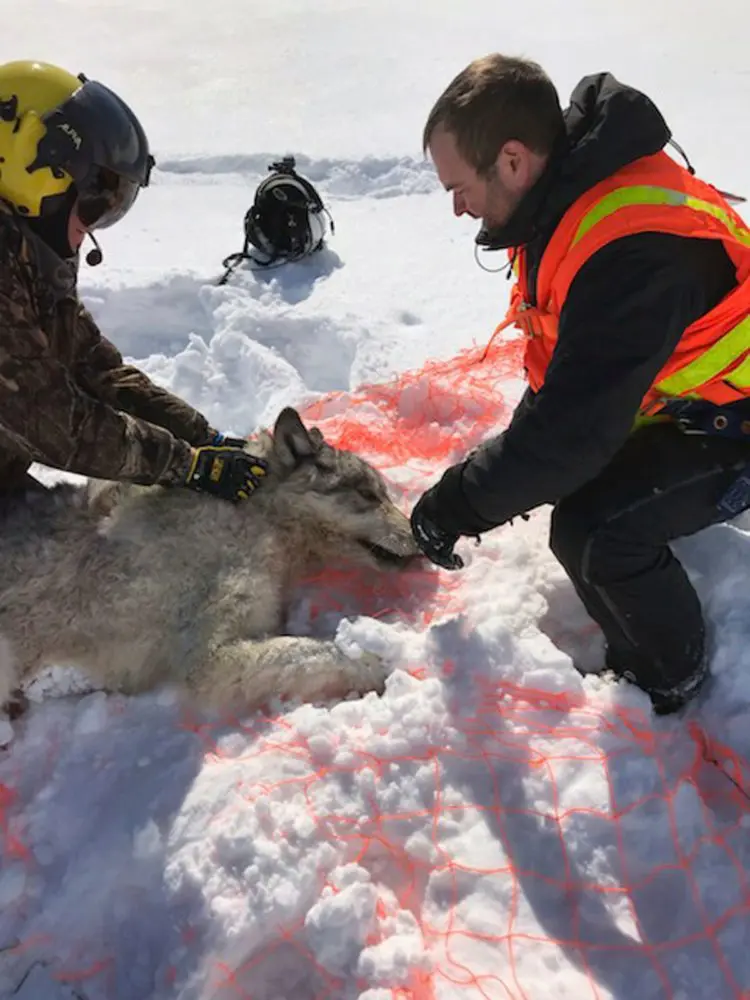Four Canadian wolves were recently captured and transported by helicopter from Ontario to Michigan’s Isle Royale National Park. covering an 894-square-mile island in the US Great Lakes, to deal with the burgeoning moose population. Scientists also hope to bolster a dwindling population of wolves that already exists on the island.
The four wolves join four others still roaming the park. Two are the last surviving descendants of the island’s original pack, while the other pair were captured in Minnesota and introduced to the park last year. The new total population of eight wolves is equally split between males and females. It’s hoped they will begin pairing up and having pups.

An Ontario wolf is captured at Michipicoten Island. Photograph: Mike Allan/AP
Historically, ice bridges have connected Isle Royale to the mainland for more than 50 days a year, allowing wolves ample time to migrate. But over the last two decades, these bridges have been far less common and consistent, in effect stranding the two last wolves at Isle Royale and preventing newcomers. The National Park Service is planning to introduce 20 to 30 wolves to the park over the next five years.
The new wolves were trapped in Ontario using foothold traps. “You don’t get to choose the wolf you trap,” says John Vucetich, an ecologist from Michigan Technological University who leads Wolves and Moose of Isle Royale project, the longest-running study of any predator-prey system in the world. “It could be old, young, or injured when captured.” Authorities wanted animals that weren’t too young or too old, and with good teeth.
Getting the right wolves is important because they typically live just four years in the wild (though alpha animals can live to twice that age), and the park wants to build a breeding population. When the new animals were dropped off on Isle Royale, it was probably a strange experience for them, says Vucetich.
“They live in families, so imagine what happens to a dog when they’re plunked into a foreign place,” he says, adding that for the most part, the new wolves didn’t know each other prior to their release in Isle Royale. “They are being introduced to each other. It’s tense and nervous – and it’s tough to find food in a new place. It’s stressful.” The relocation process can also be dangerous: last fall, a female wolf died after she was sedated for travel.
The biggest challenge to wolf reintroduction is people. Once wolves were among the most widely distributed wild mammals, but by the early 1990s, only a few hundred remained in the lower 48 states. Today, there are more than 6,000 wolves in the mainland US, and up to 12,000 in Alaska. “People’s attitudes have changed a ton,” says Vucetich. “Our attitudes have changed enough to decide definitively that we want to live with wolves. But we haven’t decided how to live with wolves.”

